Warm afternoon light streamed into Elizabeth Mesa-Gaido’s bright white modern studio nestled in the Appalachian foothills of Morehead, Kentucky, as we prepared to discuss her recent work over coffee. We chatted about how the pandemic impacted her practice, how social distancing limited in-person studio visits. Both of us were somewhat out of practice, so it took a minute to acclimate. But then the coffee kicked in and we became immersed in a discussion about her recent large-scale work, A Pandemic Landscape (2020), that commanded a whole wall of her studio. Recalling not only the peaks and valleys of virus transmission graphs but also the rolling mountainous terrain that surrounds Mesa-Gaido’s studio, it struck me that this piece (like all of her work) filters deeply troubling geopolitical realities through her immediate personal experience of them. In the process, she makes these events less abstract and more tangible, transforming them into what feminist media theorist Donna Haraway famously called, “situated knowledges.”
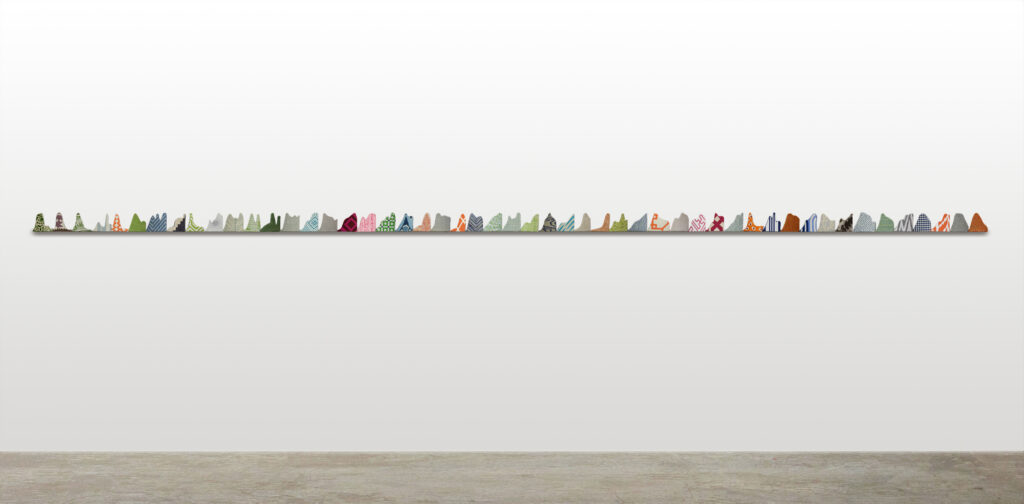
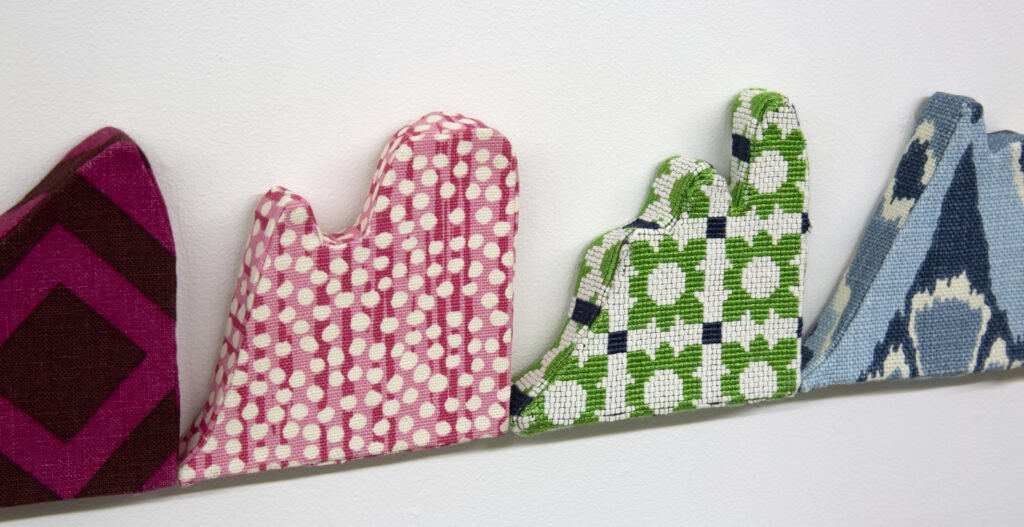
Consisting of 51 textile covered forms (one for each state and the District of Columbia), A Pandemic Landscape draws on an infographic published in The New York Times that depicted the number of cases per state between March 1 and May 17, 2020, as localized transmissions grew exponentially and the country moved into lockdown. Inspired by travel yet unable to do so, Mesa-Gaido turned to a large box of fabric swatches that her sister in New York had given her in December before the COVID-19 outbreak. At a time in which human contact was dramatically reduced and surfaces were continually sterilized to reduce the virus’ spread, Mesa-Gaido was drawn to the tactility of these fabrics and their connection to family far away. They became a way to grapple with the magnitude of the pandemic. “When I began the series,” Mesa-Gaido explained, “I was still processing the enormity of the pandemic and was self-isolating, so making each piece became a way to process the reality of the situation…trying to get through the unknown and anxiety one day at a time.”
Mesa-Gaido, a practicing artist since the 1980s and a professor at Morehead State University since the early 1990s, sees art as a form of therapy – a way to talk about difficult issues that we can’t quite wrap our heads around or are hard to discuss. Before the pandemic began, she was making a series entitled Dubious Utopian Structures (2019) that she describes as “a way for me to work through emotions caused by the daily bombardment of global information with disconcerting or unknown outcomes.” Suspended at precarious angles, the surfaces of these frenetic colorful sculptures derived from photoshopped media images that Mesa-Gaido cut into silhouettes of quick expressive drawings that she made in response to this information. One large work, in particular, addresses her experience of watching the media coverage of children being separated from their parents at the U.S. Southwest border – an issue that hit her close to home as a child of Cuban immigrants. Watching these events unfold while visiting Palm Springs, California, the artist found herself surrounded by calming and harmonious architecture while processing her anger and anxiety about the government’s inhumane treatment of these families. Capturing this tension between ordered modernist homes that speak to the American Dream and the violence and chaos caused by America’s draconian border policies, Mesa-Gaido placed clean white structures atop a jagged landscape, pulsating with seismic waves.
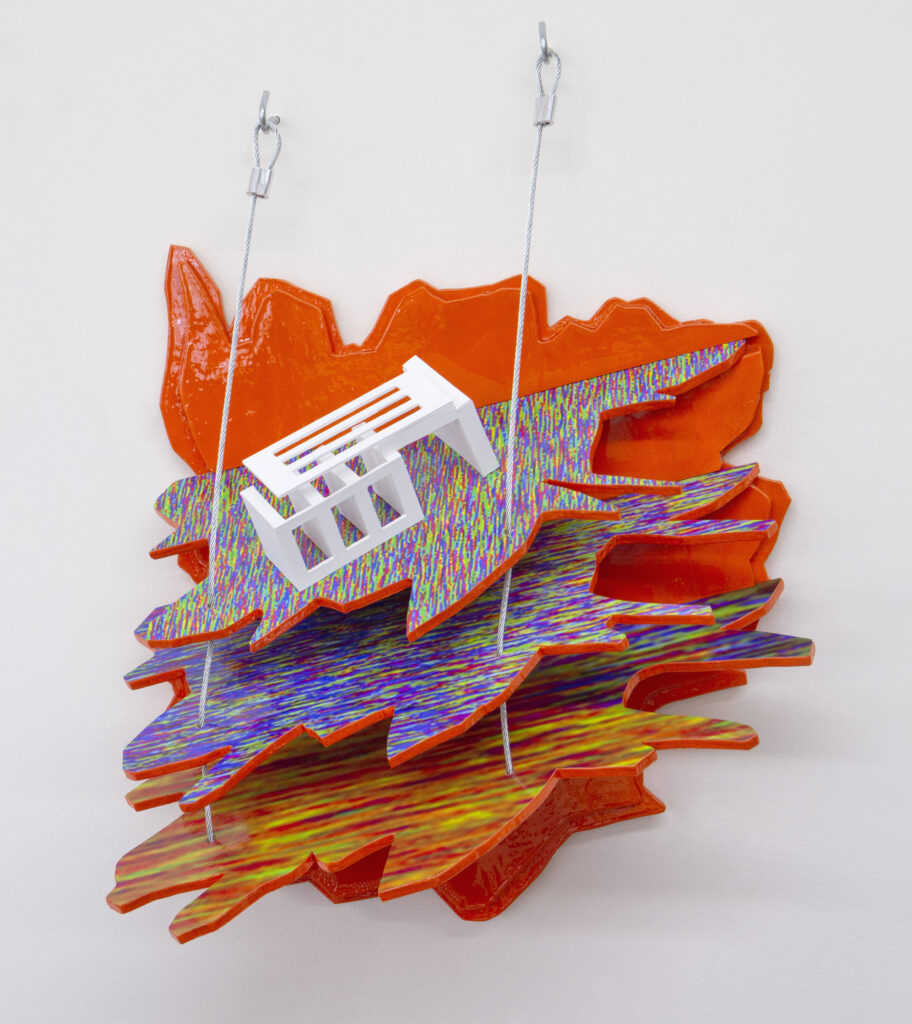
Although the frenetic energy of these works, as Mesa-Gaido points out, no longer resonates with the emotional tenor of the current moment, it’s hard not to see them as anticipating the descent into the chaos of 2020, where problems related to immigration, climate change, and polarized politics were only compounded with the onset of the pandemic. With A Pandemic Landscape, however, Mesa-Gaido seems to be returning to earlier processes such as those found in The Foreign Bodies Series (2003-present) that addressed the diagnosis of loved ones with life-threatening illnesses such as cancer. Much like the organza fabric and cotton fibers in works from Foreign Bodies like Jack I, Nancy, and Manula (each from 2003) transform malignant tumors into approachable tender creatures, the soft pillowy texture of each piece in A Pandemic Landscape envelops bits of anxiety-inducing information in a protective coating. In both instances, these works, for Mesa-Gaido, address “feelings of concern and/or anxiety about unknown outcomes.” Their biomorphic forms tether the diagnostic and predictive capacities of biometric data to uncertainty and embodied experience in ways that resonate with tenderness and care. As abstractions, they open up the possibility for being read as something different from the source for their shapes. Similar to how Christo and Jeanne-Claude wrap objects and whole buildings in fabric to transform our experience of everyday life, A Pandemic Landscape and The Foreign Bodies Series utilize fiber to shift our perceptions.
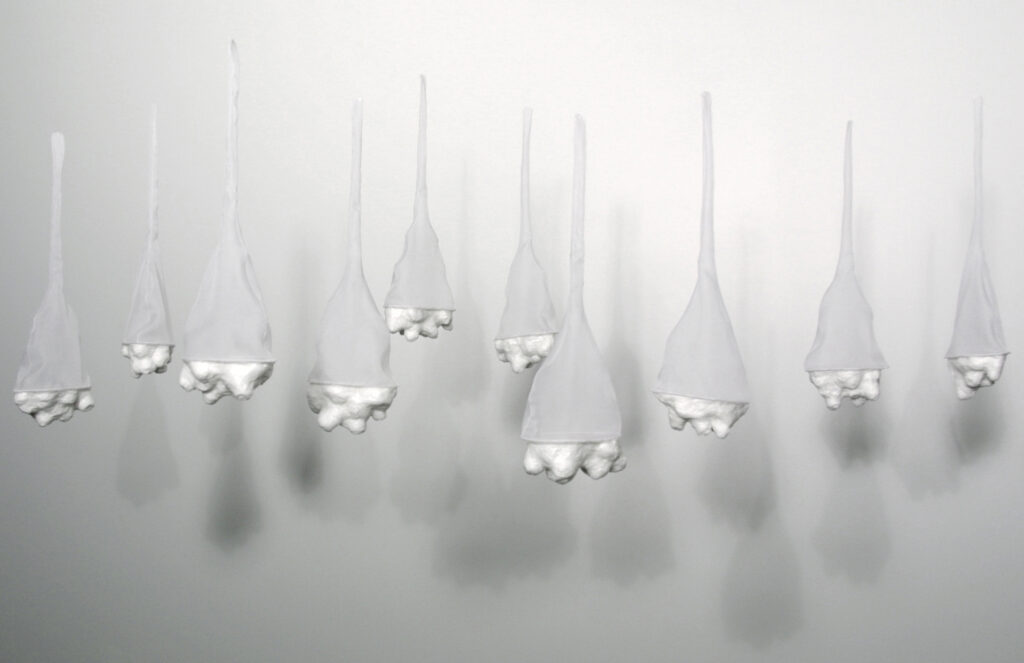
Mesa-Gaido has long used textiles and other forms of fiber in her practice. During graduate school, her choice of media sought to question the male-dominated arena of contemporary painting, asking “what painting was.” However, later, it also became a way to connect with her childhood memories of her mother, who constructed couture garments from scratch after finding them in fashion magazines. In The Couture Series (2005-2010), the artist uses vibrant and variously textured fabrics to construct unsettling yet whimsical creatures that call out to be cuddled. Although they recall stuffed animals, their precise anthropomorphic and zoomorphic origins are hard to place. Their odd bodies and incongruent textures recall the awkwardness and vulnerability of childhood as well as the sense of potentiality and playfulness that children possess.
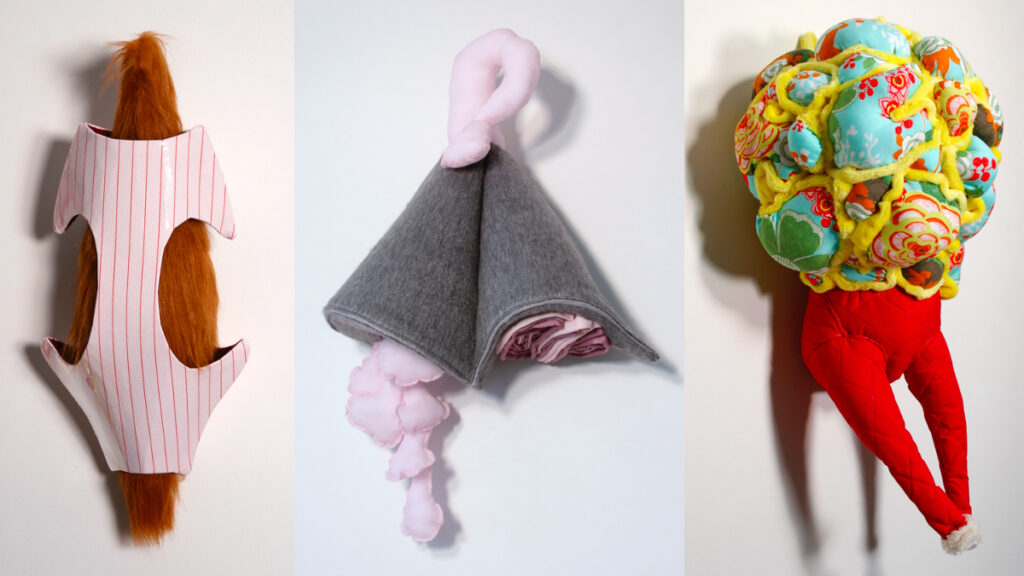
Like so many of Mesa-Gaido’s works, these sculptures’ vibrant colors and toy-like quality belie the seriousness of their content. Take, for example, her much-acclaimed series Cuban-American Piñatas (2012, with new pieces added 2016-2017 and 2019). Made after a trip to Cuba with her family in 2011 in which she witnessed “commodities, medicines, and food being carried into Cuba in suitcases by U.S. visitors to assist those who have no access to necessary, daily items,” she decided to make these piñatas to “draw attention to the unfavorable conditions in Cuba, as well as the economic failings of the government.” Additionally, this work forces those in the U.S. to reconsider products that they take for granted, as she imbues them with joy and contemplation.
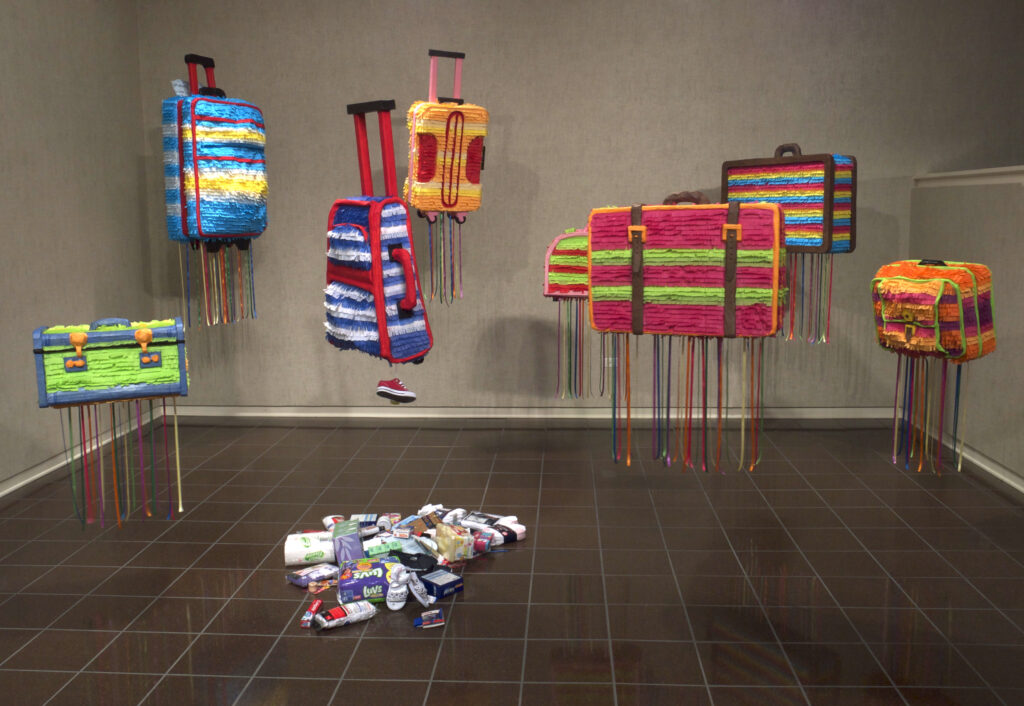
Although early in her career Mesa-Gaido made art about her Cuban American identity and her family’s immigration experience – exploring issues of cultural identity, assimilation, and marginality – she had taken a dramatic departure from that work, only to engage with her Cuban heritage in this series. While piñatas often invoke Mexican culture in the U.S., Mesa-Gaido channels the metaphorical potential of the Cuban piñatas’ unique feature: their ribbons. She explains, “They have multiple ribbons, and everyone grabs a ribbon and pulls in a communal act. It’s ironic because we think of communism as a group activity and yet, for many, it hasn’t worked out so well when commodities cannot be distributed to everybody that needs them.” Through the time-consuming task of constructing these piñatas with hand-cut, custom-fit layers of tissue paper and ribbon, she makes herself part of this communal act and shared history, as she “honors those who are in need and those trying to help in some way.”
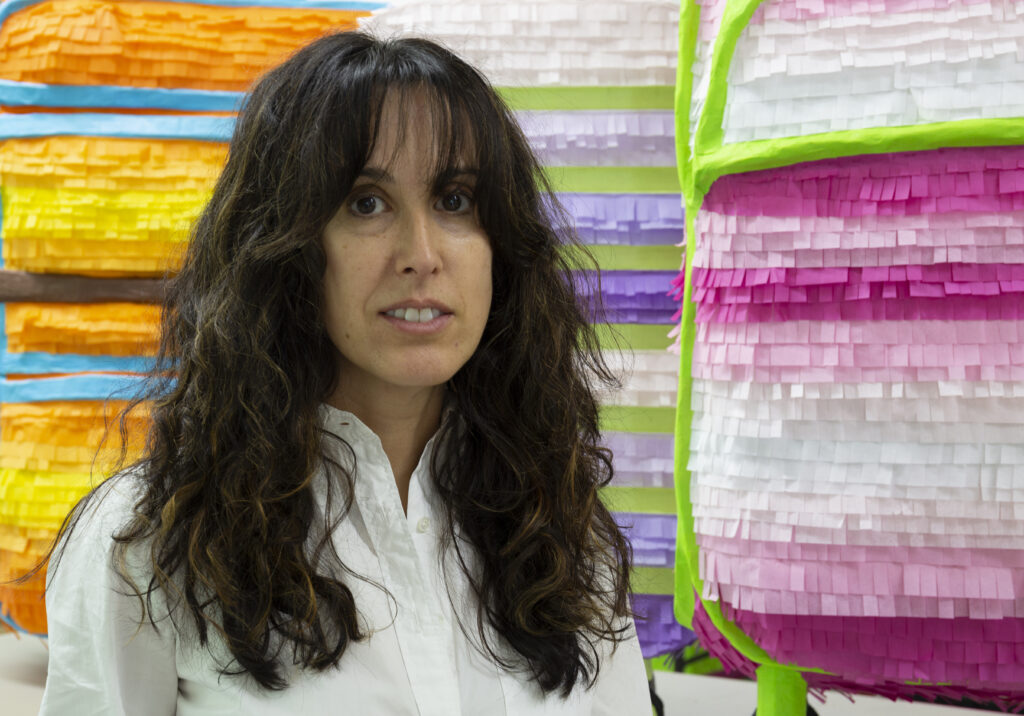
Over three decades, Mesa-Gaido’s practice has had many points of departure and return. Looking around her studio at art from different points in her career, what struck me most was her commitment to crafting objects with care. Although the work is often repetitive and labor-intensive, Mesa-Gaido says she finds it meditative. Observing the ups and downs of A Pandemic Landscape, I felt the meditative aspect of this work acting on me. When asked what she will do next, and knowing that we are not through the woods of the pandemic yet, she said that there is still a lot of fabric in the box.




